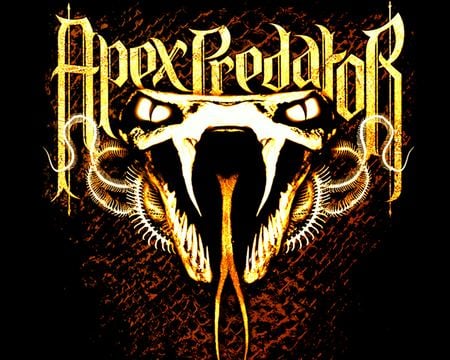 | ||
Lifespan Human: 79 years, Lion: 10 – 14 years Mass Gray wolf: 30 – 80 kg, Lion: 190 kg, Tiger: 90 – 310 kg Height Human: 1.7 m, Gray wolf: 80 – 85 cm, Lion: 1.2 m Speed Human: 45 km/h, Gray wolf: 50 – 60 km/h, Lion: 80 km/h Gestation period Gray wolf: 62 – 75 days, Lion: 110 days Length Gray wolf: 1 – 1.6 m, Lion: 1.7 – 2.5 m, Tiger: 2.5 – 3.9 m Representative species Human, Lion, Tiger, Killer whale, Polar bear | ||
10 deadliest apex predators
An apex predator, also known as an alpha predator or apical predator, is a predator residing at the top of a food chain upon which no other creatures prey. Apex predators are usually defined in terms of trophic dynamics, meaning that apex-predator species occupy the highest trophic level or levels and play a crucial role in maintaining the health of their ecosystems. One study of marine food webs defined apex predators as greater than trophic level four. The apex predator concept is commonly applied in wildlife management, conservation and ecotourism.
Contents
Food chains are often far shorter on land, with their apices usually limited to the third trophic level – for example, giant constrictor snakes, crocodilians, hyenas, wolves or big cats preying mostly upon large herbivores. Apex predators do not need to be hypercarnivores.

Ecological roles

Apex predators affect prey species' population dynamics. Where two competing species are in an ecologically unstable relationship, apex predators tend to create stability if they prey upon both. Inter-predator relationships are also affected by apex status. Non-native fish, for example, have been known to devastate formerly dominant predators. One lake manipulation study found that when the non-native smallmouth bass was removed, lake trout, the suppressed native apex predator, diversified its prey selection and increased its trophic level.

Effects on wider ecosystem characteristics such as plant ecology have been debated, but there is evidence of a significant impact by apex predators. When introduced to subarctic islands, for example, Arctic foxes' predation of seabirds has been shown to turn grassland into tundra. Such wide-ranging effects on lower levels of an ecosystem are termed trophic cascades. The removal of top-level predators, often – and, especially, recently – through human agency, can radically cause or disrupt trophic cascades.
A now commonly cited example of the effect of apex predators on an ecosystem is the dramatic changes in the Greater Yellowstone Ecosystem recorded after the gray wolf was reintroduced to Yellowstone National Park in 1995. Elk, the wolves' primary prey, became less abundant and changed their behavior, freeing riparian zones from constant grazing and allowing willows, aspens and cottonwoods to flourish, creating habitats for beaver, moose and scores of other species. In addition to their effect on prey species, the wolves' presence also affected one of the park's vulnerable species, the grizzly bear: emerging from hibernation, having fasted for months, the bears chose to scavenge wolf kills, especially during the autumn as they prepared to hibernate once again. The grizzly bear gives birth during hibernation, so the increased food supply is expected to produce an increase in the numbers of cubs observed. Dozens of other species, including eagles, ravens, magpies, coyotes and black bears have also been documented as scavenging from wolf kills within the park.
Keystone species, a concept first described by zoologist Robert Paine to explain the relationship between the starfish species Pisaster ochraceus and mussel species Mytilus californianus, are apex predators within functional groups.
In humans and dogs
The question of whether or not homo sapiens qualifies as an apex predator is a complex one that has been subject to various analyses for years. The highly varied environments that human beings have lived in (and continue to live in) coupled with the similarly highly varied behaviors of human cultures towards animals make generalizations particularly difficult; though as omnivores that far and away consume more plant matter than meat, humans have the organized ability to drive other species into extinction as well as threatened status vastly unlike any other animal. The topic has been explored in publications such as the Proceedings of the National Academy of Sciences and Scientific American, with disputed results.
Humans range from complete vegans to nearly-complete carnivores, so the status of humans even as predators is often suspect even if armed humans are extremely dangerous to any animal. When hunting with firearms, dogs, falcons, or such tools as spears, snares, clubs, or fishing gear, humans are at least local superpredators along with their dogs. Whether the uniquely-human practice of animal husbandry of animals subsequently to be butchered for meat constitutes predation is also a subject of dispute.
Both humans and dogs have extreme ranges that put them in areas in which animals capable of preying upon them, typically wolves, bears, hyenas, big cats, crocodilians, sharks, and giant snakes, are resident. Many areas are free of any large predators other than humans and dogs, and in such areas humans and dogs are by default the top predators.
